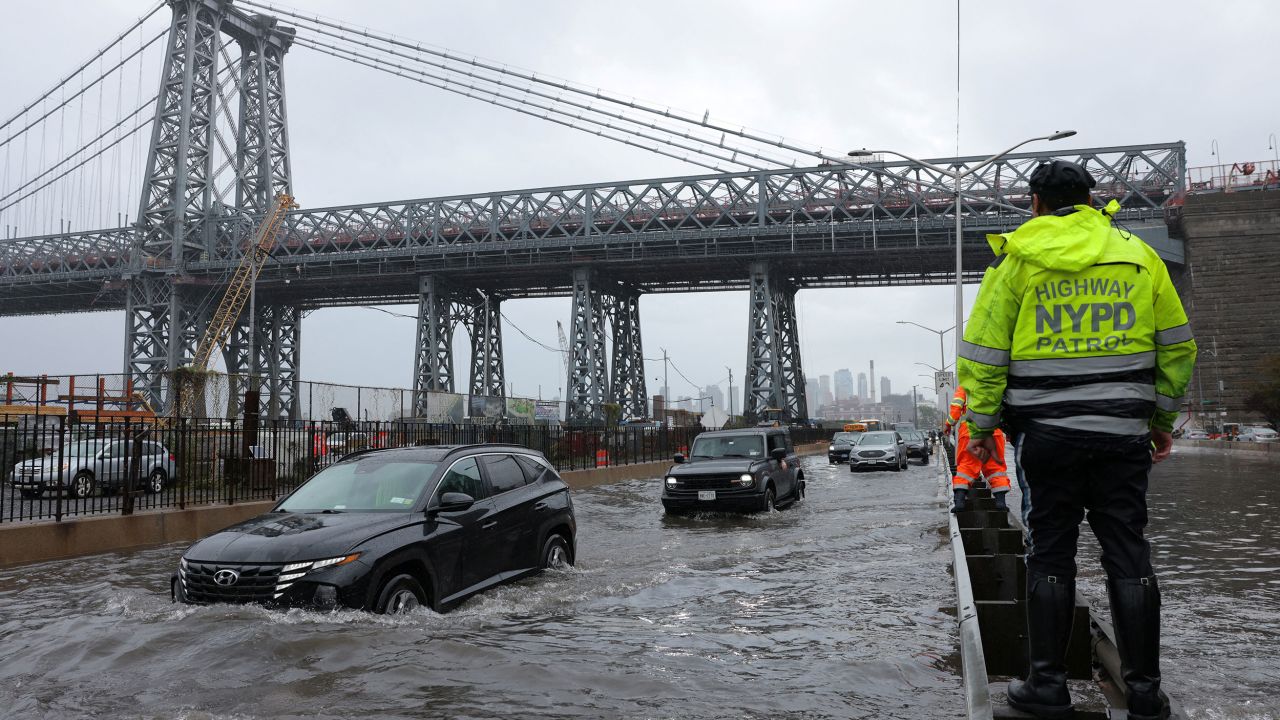New York City, the nation’s most populous metropolis, found itself grappling with an unprecedented weather crisis as record-setting rain inundated the city on Friday, causing widespread flooding and chaos. The deluge of water overwhelmed the city’s sewer system, unleashing torrents that surged through streets, invaded basements, inundated schools, and paralyzed subways and vehicles. First responders worked tirelessly to rescue stranded individuals as the city faced a dire emergency.
Climate Change Blamed for the Catastrophic Downpour
As New Yorkers grappled with the aftermath of the historic rainfall, climate experts pointed to a concerning trend. The nearly 8 inches of rainfall at John F. Kennedy International Airport was the highest recorded in over seven decades. Brooklyn experienced a month’s worth of rainfall in a mere three hours, a phenomenon that should statistically occur only once every century. Scientists are linking such extreme weather events to climate change, emphasizing that a warmer atmosphere is capable of absorbing more water vapor, leading to intensified rainfall that can swiftly overwhelm aging flood protection systems.
Rohit Aggarwala, New York City’s Chief Climate Officer, underscored the urgency of addressing climate change, stating, “Overall, as we know, this changing weather pattern is the result of climate change, and the sad reality is our climate is changing faster than our infrastructure can respond.”
State of Emergency Declared as Flooding Hits Critical Levels
With the situation deteriorating rapidly, New York Governor Kathy Hochul declared a state of emergency for New York City, Long Island, and the Hudson Valley. In an impassioned plea to residents, Governor Hochul stressed the gravity of the situation, calling it a “life-threatening event” and urging people to stay home due to perilous travel conditions. New Jersey Governor Phil Murphy also declared a state of emergency in his state as the crisis unfolded.
Firefighters were dispatched to rescue residents trapped in flooded basements across the city, while floodwater seeped into 150 of New York City’s schools. Although the schools remained open, one in Brooklyn had to evacuate when floodwater caused the school’s boiler to malfunction. New York City school chancellor David Banks assured the public of the students’ safety, saying, “Our kids are safe, and we continue to monitor the situation.”
Transportation Disrupted, Air Travel Affected
The city’s transportation infrastructure bore the brunt of the relentless rain, with subway systems and railways experiencing major disruptions. Ten train lines in Brooklyn were suspended, necessitating the deployment of additional buses to mitigate the travel chaos. However, by Friday evening, limited service resumed on Metro-North lines, and seven subway lines were fully restored, showing New Yorkers’ resilience in the face of adversity.
Air travel also faced significant setbacks, as flight delays affected all three New York City area airports. Flooding inside the historic Marine Air Terminal at LaGuardia Airport temporarily forced its closure, impacting travelers. Nevertheless, the terminal, which serves Spirit and Frontier airlines, was back in operation by Friday night.
As the flood watches expired for most of the region, including parts of Connecticut and Long Island, the repercussions of this record-setting rain event continued to be felt across New York City. The city now faces the daunting task of recovery and rebuilding after one of the most severe weather events in its history, leaving many to reflect on the urgent need for climate resilience in the face of a changing world.
















